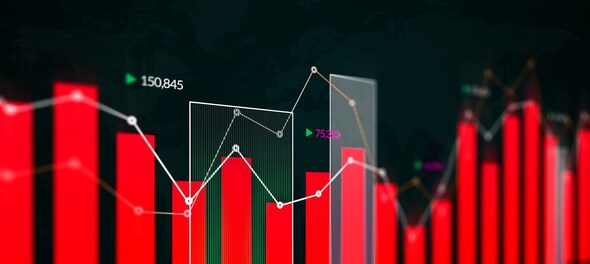
Asian share markets were attempting a rare rally on Monday after Wall Street managed a bounce from deep lows, though investors were also braced for bad news from Chinese economic data due later in the session.
Forecasts are for a fall of 6.1 percent in China's annual retail sales, while industrial output is seen rising just 0.4 percent. Risks are to the downside given new bank lending in China hit the lowest in nearly four and half years in April.
"The reports should highlight the economic damage from the country's zero-COVID policy- we expect contractions in production and demand indicators," said Bruce Kasman, head of economic research at JPMorgan.
"Having lowered our full-year GDP forecast to 4.3 percent, the policy response to weakness remains surprisingly tame," he added. "The CNY is where the action is, as the PBOC has been silent despite the recent sharp depreciation."
Beijing on Sunday did allow a further cut in mortgage loan interest rates for some home buyers and there was talk the central bank might cut its medium-term lending rate on Monday by 10 basis points.
MSCI's broadest index of Asia-Pacific shares outside Japan firmed 0.3 percent, after shedding 2.7 percent last week to hit a two-year low. Japan's Nikkei rose 1.2 percent, having lost 2.1 percent last week even as a weak yen offered some support to exporters.
S&P 500 stock futures edged up a further 0.3 percent in early trade, while Nasdaq futures added 0.6 percent. Both remain far from last year's highs, with the S&P having fallen for six straight weeks.
Sky-high inflation and rising interest rates saw US consumer confidence sink to an 11-year low in early May and raised the stakes for April retail sales due on Tuesday.
Downgrading growth
A hyper-hawkish Federal Reserve has driven a sharp tightening in financial conditions, which led Goldman Sachs to cut its 2022 GDP growth forecast to 2.4 percent, from 2.6 percent. Growth in 2023 is now seen at 1.6 percent on an annual basis down from 2.2 percent.
"Our financial conditions index has tightened by over 100 basis points, which should create a drag on GDP growth of about 1pp," said Goldman Sachs economist Jan Hatzius. "We expect that the recent tightening in financial conditions will persist, in part because we think the Fed will deliver on what is priced."
Futures imply 50 basis-point hikes in both June and July and rates between 2.5-3.0 percent by year end, from the current 0.75-1.0 percent.
Fears that all this tightening will lead to recession spurred a rally in bonds last week, which saw 10-year yields drop 21 basis points from peaks of 3.20 percent. Early Monday, yields were up a shade at 2.94 percent.
The pullback saw the dollar come off a two-decade top, though not by much. The dollar index was last at 104.55 and within spitting distance of the 105.01 peaks. The euro stood at $1.03, having got as low as $1.03 last week, while the dollar edged up to 129.44 yen after dipping as deep as 127.54 last week.
In cryptocurrencies, Bitcoin was last up 5.1 percent at $31,277, having touched its lowest since December 2020 last week following the collapse of TerraUSD, a so-called stablecoin.
In commodity markets, gold was pressured by high yields and a strong dollar and was last up 1.1 percent at $1,810 an ounce having shed 3.8 percent last week.
Oil prices were on the rise as US gasoline prices reached a record high, China looked ready to ease pandemic restrictions and investors worried supplies will tighten if the European Union bans Russian oil. Brent was quoted 73 cents higher at $112.28, while US crude rose 79 cents to $111.28.
Check out our in-depth Market Coverage, Business News & get real-time Stock Market Updates on CNBC-TV18. Also, Watch our channels CNBC-TV18, CNBC Awaaz and CNBC Bajar Live on-the-go!


Odisha Lok Sabha elections: Schedule, total seats, Congress candidates and more
Apr 20, 2024 11:39 AM
Lok Sabha Election 2024: Issues raised by Prime Minister Modi have not resonated with people of Tamil Nadu, says Congress
Apr 19, 2024 11:38 PM
West Bengal Lok Sabha elections 2024: A look at Congress candidates
Apr 19, 2024 8:45 PM

